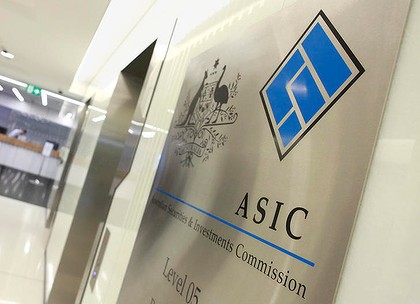‘Loan fraud’ – but no investigation
 Consumer activist Denise Brailey has countered claims from the corporate watchdog that she had failed to provide documents for them to investigate low-doc loan fraud.
Consumer activist Denise Brailey has countered claims from the corporate watchdog that she had failed to provide documents for them to investigate low-doc loan fraud.
Australian Securities & Investments Commission deputy chairman Peter Kell told Fairfax Media and the ABC this week that ASIC had invited Ms Brailey to “provide evidence of the systematic loan fraud she alleges”.
“The very limited material provided to date simply does not support any of the claims she makes,” said Mr Kell.
However, Denise Brailey has confirmed that more than 100 of the members of her action group, all alleging loan fraud, had filed complaints with ASIC only to receive a form letter saying there would be no investigation and advising them to get a lawyer.
ASIC turns down request
BusinessDay has contacted many of the borrowers to confirm this. The borrowers, many who are pensioners and small business people, cannot afford a lawyer. Of these complaints, many had Loan Application Forms (LAFs), which they claimed had been tampered with, attached.
“ASIC has close to 100 LAFs from members (of her action group Banking & Finance Consumers Support Association) who say they wrote letters to ASIC and lodged formal complaints and attached the offending LAFs,” said Ms Brailey.
“Others wrote letters (another 60 people or more) that were formal complaints that contained no LAF. Every one of my members says they received an identical form letter from ASIC.”
As reported on Monday, the veteran consumer rights campaigner has made public 2500 private emails and bank documents to expose what she describes as ”Australia’s subprime crisis”.
Ms Brailey claims that lenders and mortgage brokers tampered with documents to provide more credit for borrowers with ”low-doc” loans.
She says she is making private documents public after years of trying to get corporate regulators to investigate the banks and other lenders over what she alleges is ”systemic fraud” in the ”low-doc” market.
Low-documentation loans are made to borrowers such as business owners who can’t prove a regular income, but the borrower signs a declaration as to estimated income. The loans usually carry a higher interest rate than other loans, as they are seen as more risky.
Of the borrowers who have asked for help from Ms Brailey’s action group, Banking & Finance Consumers Support Association, 1170 of them claim their loan application forms (LAFs) have been tampered with. In most cases, the income figure has been increased to justify more credit. “There is not one clean ‘LAF’ among them,” said Ms Brailey.
The banks and the corporate regulators reject Ms Brailey’s claims. They say fraud in the low-doc loan market is the fault of ”rogue” mortgage brokers.
In his repudiation this week of the Brailey claims, Mr Kell said ASIC had recently banned seven mortgage brokers for fraud or misconduct relating to loan applications.
Not just ‘rogue brokers’
However, the flood of responses this week to the Brailey claims, along with the emails and other documents published this week on her website, support the view that low-doc fraud is more widespread than the work of ‘‘rogue’’ brokers.
Lawyer Graeme Hancock, who has assisted victims of low-doc lending, says the cases he has seen corroborate this.
“I’ve reviewed many files from BFCSA,” Mr Hancock said. “I’ve seen towards 100 Loan Application Forms, all of which have been completed in more than one set of handwriting, and all the income details are grossly overstated in someone else’s handwriting.
“The mere fact that I have seen the same thing in so many cases clearly suggests this type of thing is systematic. Other parts of the process, such as the broker asking the borrower to sign the application form as ‘true and correct’ without all the detail being included is just too widespread to be just a coincidence.”
Most of the people Mr Hancock had interviewed did not have the means of fighting lending recoveries. The situation had improved with the introduction of the national lending laws in 2010. Until then it was only NSW borrowers, under the Contracts Review Act, who could ask the court for relief on the basis that the transaction was unjust.
“But that doesn’t help anybody before then and I gather they are the vast majority of cases. Without being able to take the unjust route you would be left trying to prove that the transactions and the relationship was unconscionable, which is very difficult,” he said.
Service Calculator
In another aspect of the claims, Denise Brailey has downloaded on her website information relating to the Service Calculator which she says is the program used by all the banks and other low-doc lenders that determines loan approvals.
It is via the Service Calculator that the lenders are orchestrating the low-doc lending process and using the brokers as their agents, she claims. Mortgage brokers have a password the Service Calculator which enables them to enter the bank and non-bank lender’s computer system to have loans processed but it is the lenders who determine the outcome.
Therefore, she claims, the lenders are responsible for the ‘imprudent lend’ to customers who cannot afford the loan.
Ms Brailey has called on ASIC and the Financial Ombudsman Service to use their powers to demand the lenders release the Loan Application Forms and information relating to the Service Calculator which she maintains is the key to unlocking the systemic fraud.
This article originally appeared in Kempsey’s Macleay Argus
